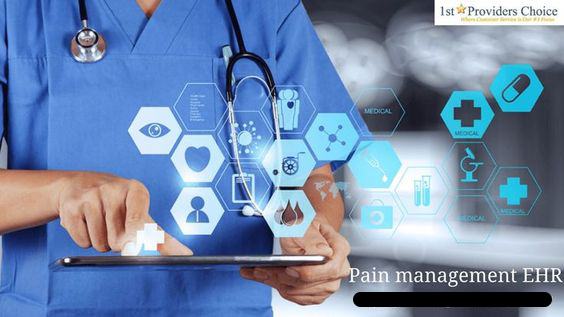Top 5 Features To Look For In A Pain Management Software
In the United States, pain management is not only a difficult topic to talk for some, but it is also one of the most commonly utilised, required, and consistent medical specialisations in the industry. Pain management professionals have a difficult job and a responsibility to their patients to provide quality, safe, and precise care. PM specialists who lack the necessary resources and tools raise the likelihood of substance misuse and other harmful outcomes. PM specialists need a good pain management software to help them operate more efficiently and effectively because they have such a challenging yet vital job. EHRs for pain treatment can assist professionals reduce risks while maintaining the integrity of their decisions.
1) Customized Templates
For a pain management EHR, customizable templates are a must-have feature. They are crucial because they allow PM specialists to customise their documenting procedure to their specific workflow or patient. When a documentation template doesn't allow for this level of flexibility, patient data integrity is jeopardised. In this sector, it's critical for a treating physician to be able to chart and report every detail in a way that preserves the data's integrity and informs future decisions.
2) Patient Scheduling Software
When it comes to your patients and the scheduling of their visits, it's critical to first learn about their previous encounters. A good pain management EHR should provide a straightforward historical view of patient information and visit history, as well as a user-friendly interface with lots of features and the flexibility to set up pre-defined requirements. You can not only acquire insight into the patient before their appointment with patient scheduling options in your pain management billing EHR, but the patient also gains access to vital reminders that help them stay accountable.
3) User-Friendliness
The requirement to click between numerous screens in the practise system to access information, order tests, examine results, or graph patient vitals is a productivity stumbling block for many PM clinicians. Each of these tasks should be possible for a physician to complete on a single screen in your pain management EHR. A provider can graph and analyse patient vitals, order and view labs, and much more all in one place.
4) The Prescription-Writing Process in the Digital Age
While PM practitioners must be more cautious than others when writing prescriptions, a good pain management EHR can enable your business do so more efficiently. Providers can now prescribe while on the go while still having access to critical patient health data to back up their professional decisions.
5) Patient Access Portal
While the patient portal has been around for a while, your medical management software should have one as well. Patients can access their personal health information (PHI) from anywhere at any time with a good patient portal. It helps users to keep track of their vitals visually, comprehend their test results, and securely communicate with their primary care physician. Patients will be able to plan or cancel appointments, make payments, and complete their intake online if your pain management EHR includes a patient portal.
Visit Pain Management EHR to learn more about how your PM practise may deploy a top-of-the-line pain management software.




Comments
Post a Comment